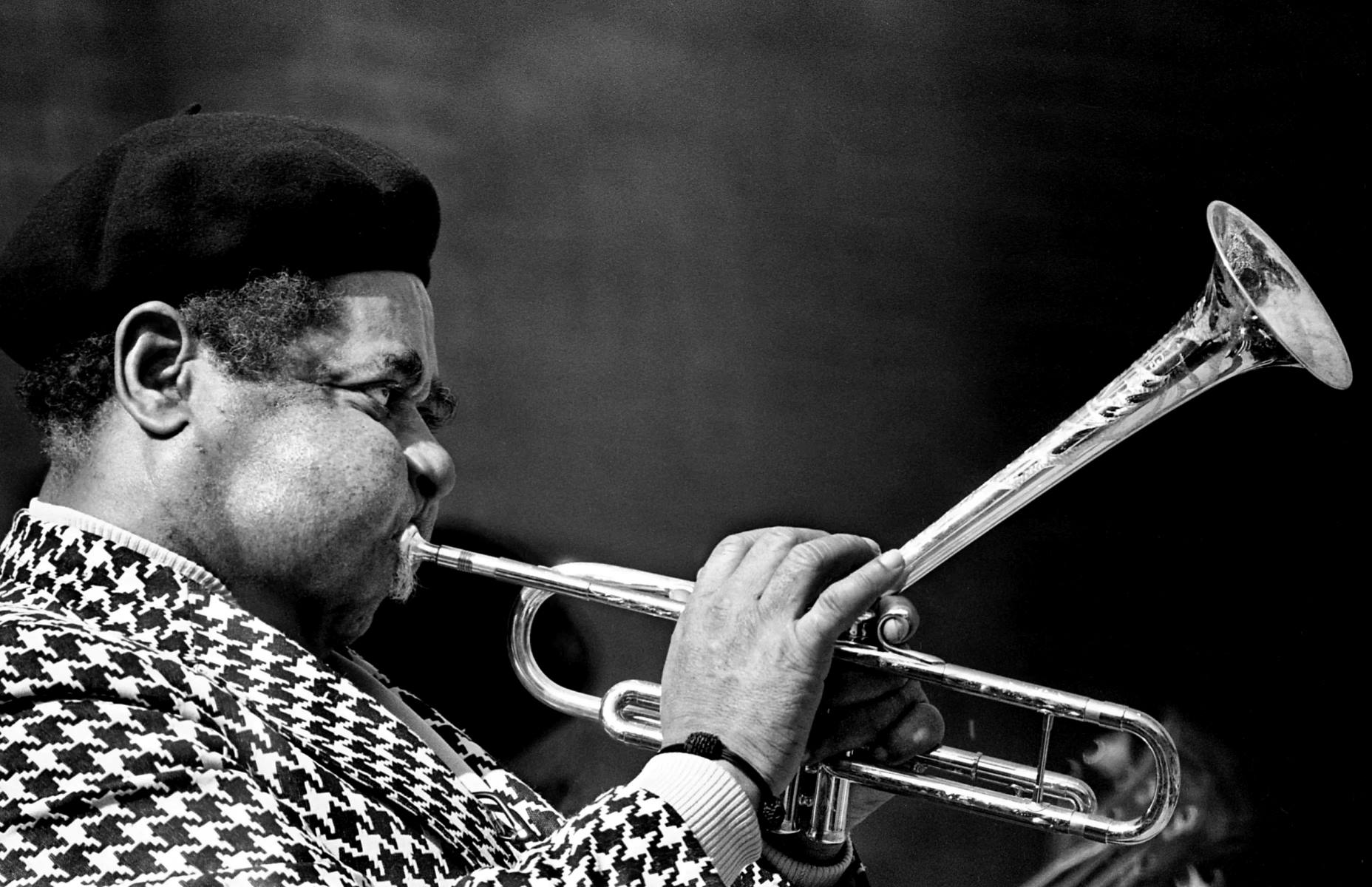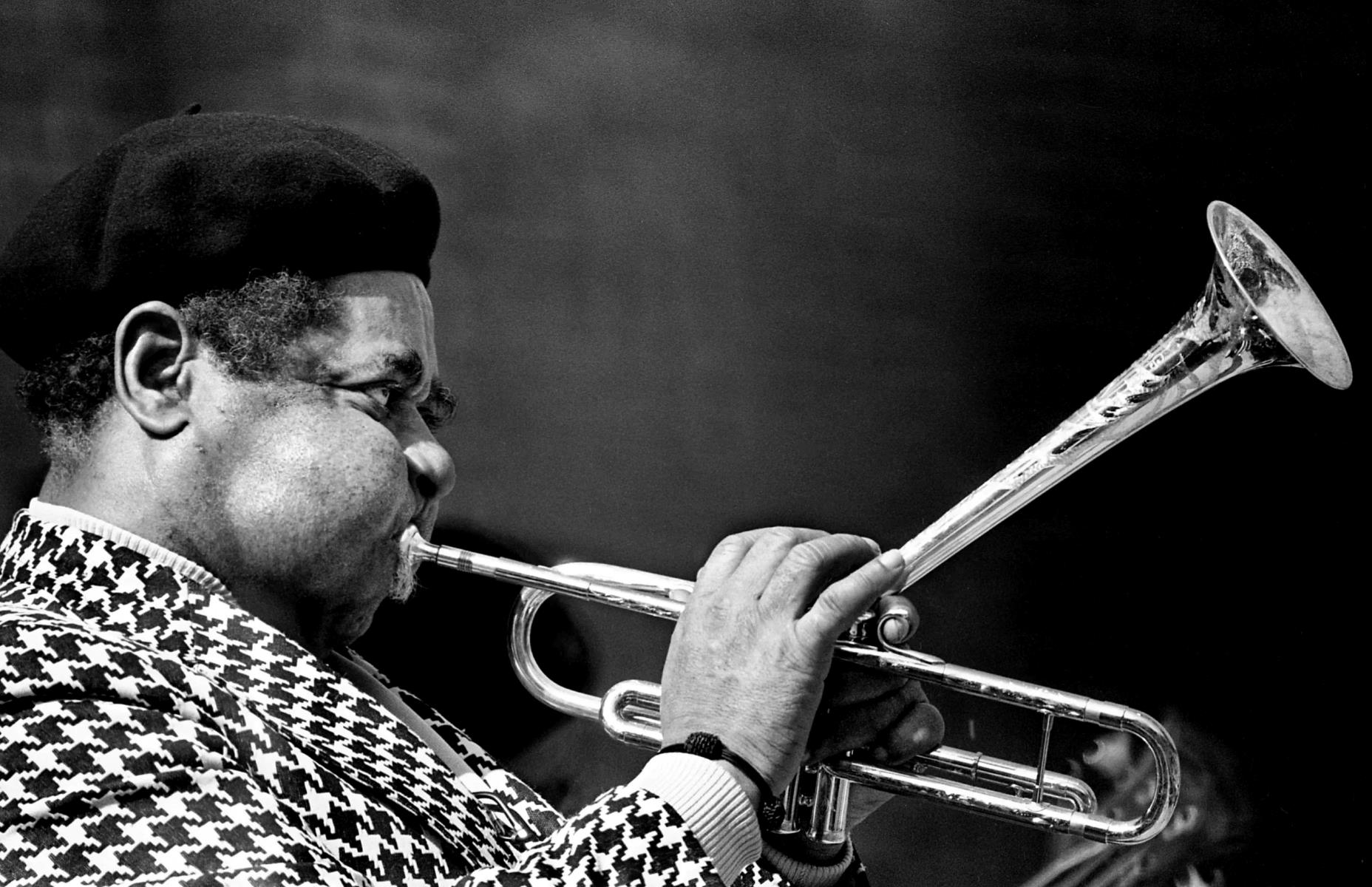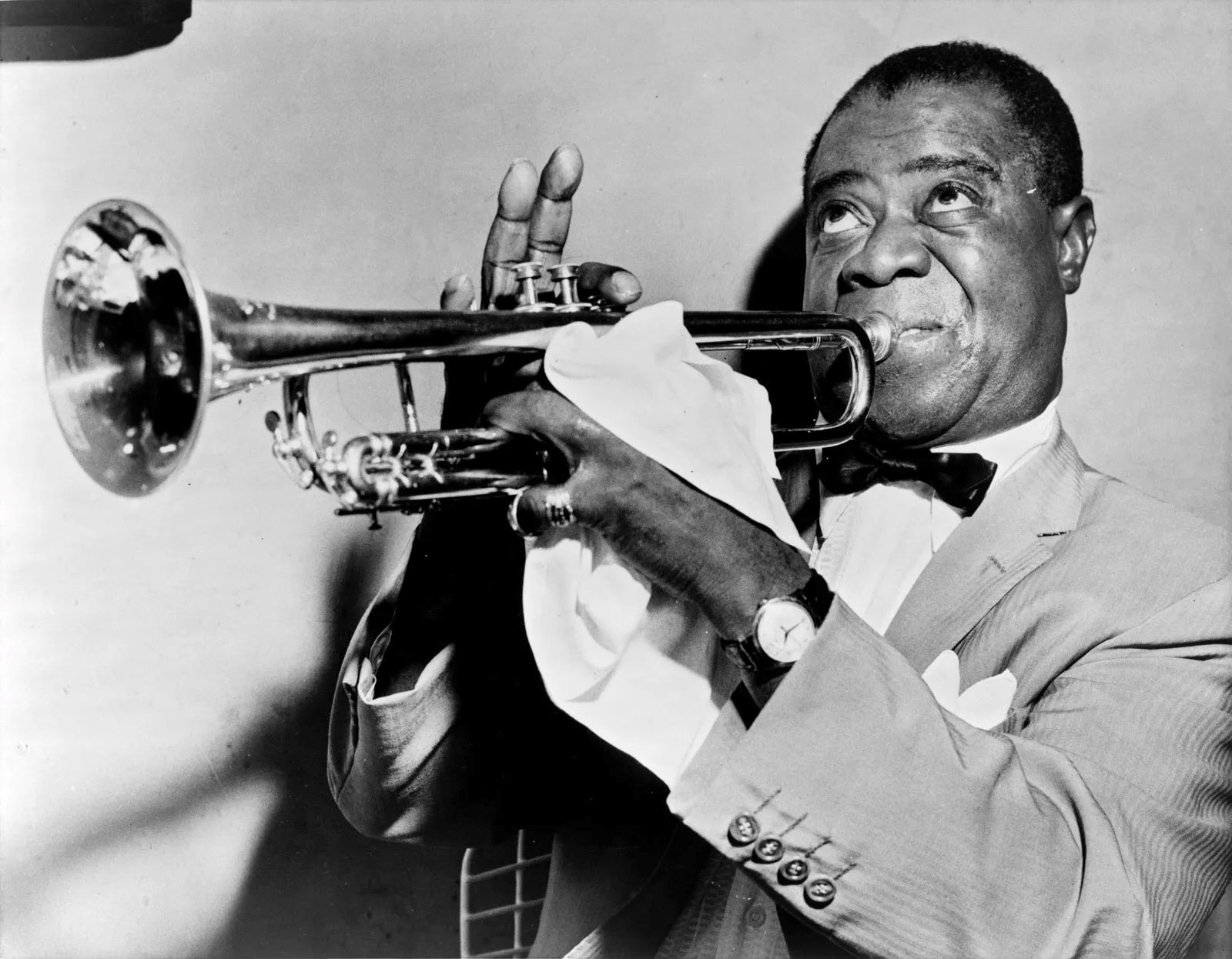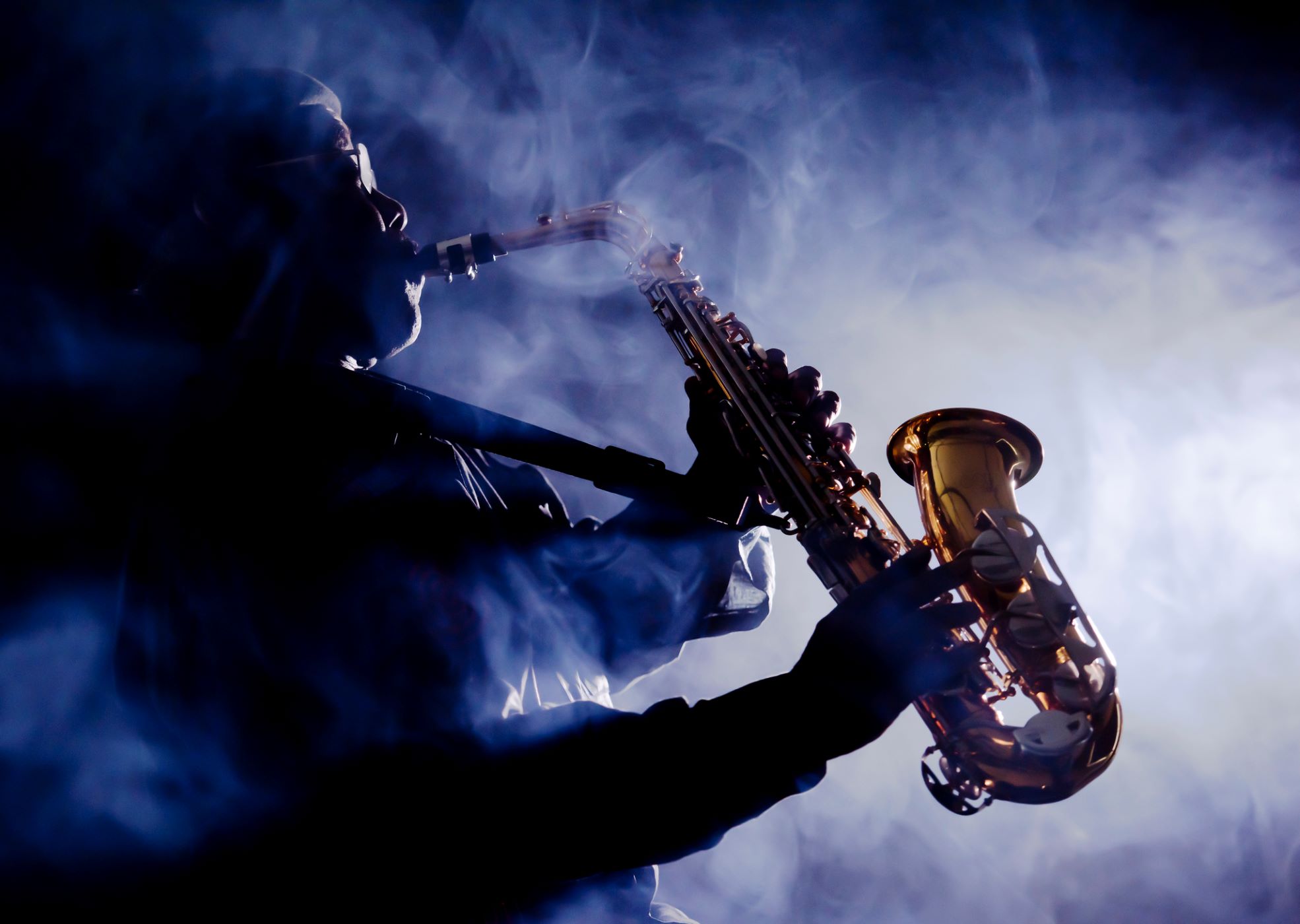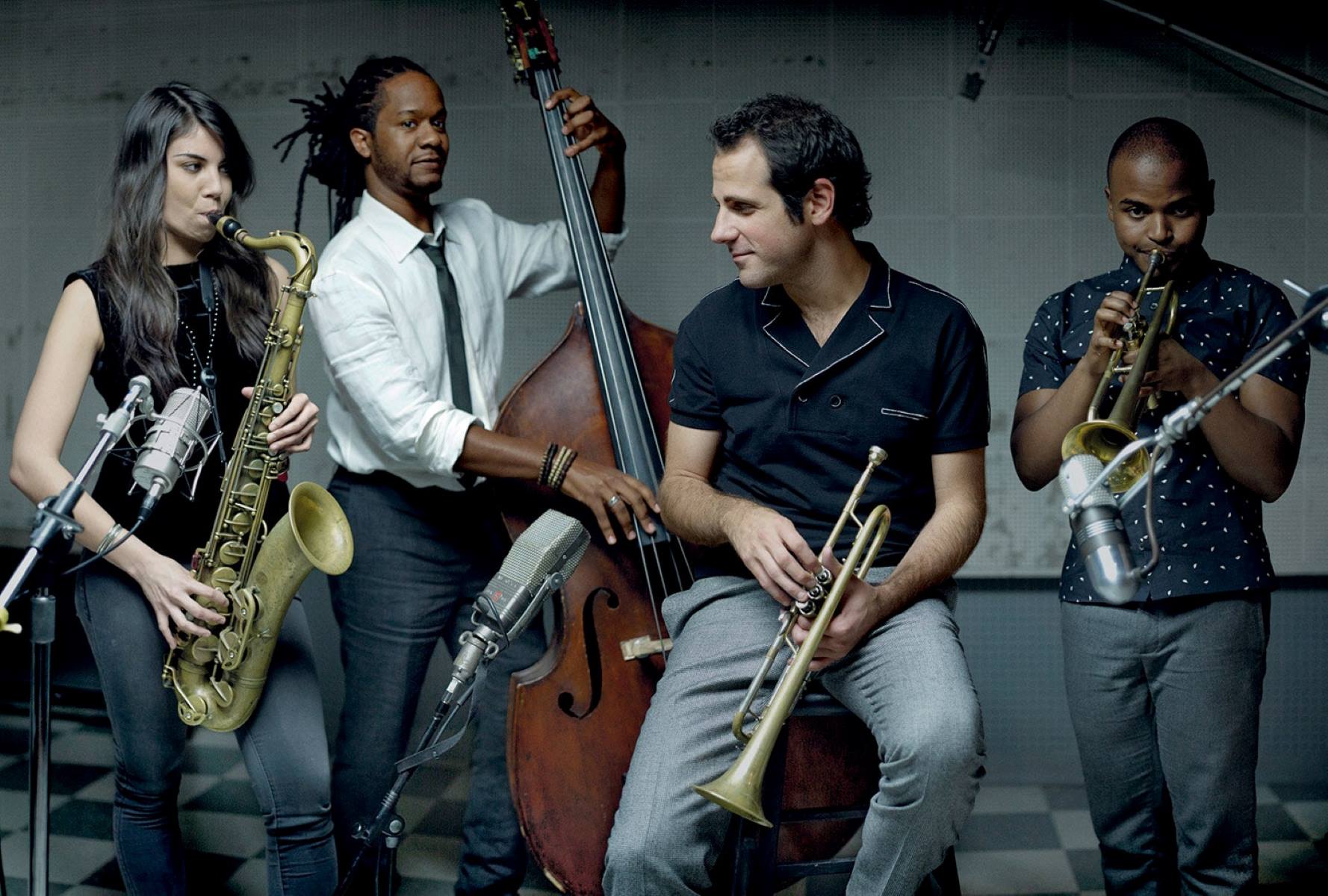

Jazz
How To Become A Jazz Musician
Modified: January 22, 2024
Discover the steps to become a jazz musician and master the art of creating soulful melodies. Explore the world of jazz and unleash your musical potential.
(Many of the links in this article redirect to a specific reviewed product. Your purchase of these products through affiliate links helps to generate commission for AudioLover.com, at no extra cost. Learn more)
Table of Contents
- Introduction
- Getting Started with Jazz Music
- Understanding Jazz Theory
- Mastering Jazz Techniques
- Building a Repertoire of Jazz Standards
- Improvisation in Jazz
- Developing Your Jazz Musicianship
- Collaborating with Other Jazz Musicians
- Performing in Jazz Ensembles
- Recording and Releasing Your Jazz Music
- Networking in the Jazz Community
- Continuing Education in Jazz Music
- Conclusion
Introduction
Welcome to the fascinating world of jazz music! If you have ever been captivated by the sounds of a smooth saxophone, the intricate melodies of a piano, or the rhythmical beats of a double bass, then you are familiar with the enchantment and allure of jazz.
Jazz is a genre that originated in the early 20th century, primarily among African American communities in the United States. It is characterized by its improvisational nature, syncopated rhythms, and expressive performance techniques. Over the years, jazz has evolved and branched out into various subgenres, such as bebop, cool jazz, fusion, and Latin jazz, to name just a few.
Many musicians are drawn to jazz not only for its technical complexity but also for the freedom it offers in terms of self-expression and creativity. The journey to becoming a jazz musician is both challenging and rewarding, requiring a deep understanding of jazz theory, mastery of various techniques, and an ability to connect and communicate with other musicians through collaboration and improvisation.
In this article, we will guide you through the process of becoming a jazz musician, from getting started with jazz music to honing your skills, building a repertoire, and ultimately finding your place in the jazz community. So grab your instrument, put on your listening ears, and let’s dive into the wonderful world of jazz!
Getting Started with Jazz Music
Embarking on your jazz music journey begins with a strong foundation in the genre’s history and listening to influential jazz recordings. Immerse yourself in the sounds of jazz legends such as Louis Armstrong, Miles Davis, Ella Fitzgerald, and John Coltrane to understand the essence of the music.
To truly grasp the nuances of jazz, it’s crucial to study the rhythmic foundations. Start by familiarizing yourself with the 12-bar blues form, as it serves as a fundamental structure in many jazz compositions. Additionally, learning basic jazz chords and scales, such as the major and minor scales, will help you navigate the harmonic complexities of the genre.
Seeking guidance from a knowledgeable jazz instructor is highly recommended. They can provide you with personalized lessons that focus on technique, improvisation, and the stylistic elements specific to jazz. Private lessons allow for individualized attention, ensuring that you develop proper technique and form from the outset.
Another invaluable resource for learning jazz music is transcribing solos from iconic jazz recordings. Transcribing involves listening to a jazz solo and writing down the notes and rhythms as accurately as possible. This process will help you internalize the melodic and rhythmic language of jazz and provide insight into the improvisational techniques employed by renowned musicians.
As you progress, consider joining a jazz ensemble or combo in your community or at your school. Playing with others will not only enhance your sense of rhythm and timing but also expose you to different musical perspectives and allow you to develop your skills in a collaborative setting.
Lastly, always remember to keep an open mind and a willingness to experiment. Jazz is known for its innovation and pushing boundaries, so don’t be afraid to explore unconventional ideas and incorporate your own unique style into your playing. Remember, jazz is all about embracing improvisation and expressing yourself authentically.
Understanding Jazz Theory
To become a proficient jazz musician, it is essential to have a solid understanding of jazz theory. Jazz theory encompasses the principles and concepts that govern the harmonic, melodic, and rhythmic elements of jazz music.
At the heart of jazz theory is the chord-scales relationship. Unlike other genres of music, jazz often involves complex harmonies and chord progressions. To navigate these intricate harmonies, it is crucial to know which scales can be played over specific chords. Major scales, dominant scales, and altered scales are just a few examples of the scales commonly used in jazz improvisation.
One of the cornerstones of jazz theory is the concept of jazz harmony. Jazz musicians often employ extended and altered chords to add color and tension to their compositions and improvisations. Understanding concepts such as chord extensions, substitutions, and voicings will enable you to construct more sophisticated and harmonically rich jazz arrangements.
Another important aspect of jazz theory is understanding and recognizing jazz forms and structures. Familiarize yourself with common jazz forms such as the blues, rhythm changes, and AABA (also known as the 32-bar song form). These forms provide a framework for improvisation and allow musicians to navigate the structure of a jazz composition.
Rhythm plays a vital role in jazz, and mastering rhythmic concepts is fundamental to becoming a proficient jazz musician. Studying jazz rhythms, syncopation, swing feel, and various time signatures will help you develop a strong sense of groove and the ability to interact with other musicians effectively.
Throughout your jazz theory studies, it’s important to apply what you learn by practicing with your instrument or voice. Experiment with different chord progressions, scales, and rhythmic patterns to internalize and incorporate these concepts into your playing. Additionally, transcribing solos and analyzing jazz recordings will provide practical examples of how theory is applied in a musical context.
Remember, jazz theory is not meant to stifle creativity but rather to provide a framework for exploration and expression. As you become more comfortable with the language of jazz theory, you will gain the confidence to break the rules and venture into uncharted musical territories.
Mastering Jazz Techniques
Becoming a skilled jazz musician requires honing your technical abilities on your instrument or voice. Here are some key techniques to focus on:
1. Scales and Arpeggios: Practice scales and arpeggios in all keys. Familiarize yourself with major, minor, and dominant scales, as well as the corresponding arpeggios. These foundational exercises will improve your finger dexterity and help you navigate jazz chord progressions with ease.
2. Chord Voicings: Jazz piano players and guitarists should work on mastering various chord voicings. Learn how to play chord inversions, drop 2 and drop 3 voicings, and quartal voicings. These different voicings will allow you to create rich and interesting harmonic textures when comping or accompanying other musicians.
3. Articulation: Pay attention to your articulation, especially if you play a wind instrument. Experiment with different attacks, tonguing techniques, and dynamics to achieve a wide range of expressive playing styles. Developing a clean and controlled sound will enhance your performance and add depth to your improvisations.
4. Phrasing: Jazz is an expressive genre, and good phrasing is crucial for conveying emotion in your playing. Work on developing your sense of musicality by studying the phrasing of jazz legends. Experiment with different note lengths, accents, and rhythmic patterns to add depth and personality to your solos.
5. Rhythmic Flexibility: Jazz music is known for its rhythmic complexity and syncopation. Practice playing in different time signatures, experiment with odd meters, and work on your internal sense of rhythm. The ability to navigate intricate rhythms and maintain a strong sense of groove is essential for jazz musicians.
6. Transcription and Analysis: Choose solos from your favorite jazz recordings and transcribe them note by note. Analyze the melodic and rhythmic choices of the musicians and try to incorporate them into your playing. This will help you develop your own vocabulary as a jazz musician and deepen your understanding of the genre.
Remember, mastering jazz techniques takes time and dedicated practice. Patience and perseverance are key as you work towards building a strong technical foundation and developing your own unique sound in the world of jazz.
Building a Repertoire of Jazz Standards
One of the essential aspects of being a jazz musician is having a repertoire of jazz standards. These are the well-known and widely performed compositions that form the backbone of the jazz tradition. Building a repertoire of jazz standards will not only expand your musical knowledge but also provide you with a foundation for improvisation and collaboration with other musicians.
Start by immersing yourself in the recordings of jazz icons such as Duke Ellington, Charlie Parker, and Thelonious Monk. Listen carefully to their interpretations of jazz standards and pay attention to the melodies, chord progressions, and overall feel of the music. This will help you develop a deep understanding of the essence of jazz standards.
Once you have familiarized yourself with the repertoire, choose a few jazz standards to begin with. Start by learning the melody and chords of each song. Practice playing the melody on your instrument or singing it if you are a vocalist. Then, work on playing the chords using different voicings or comping patterns to create a harmonic foundation for the song.
As you become more comfortable with the melody and chords, delve into the realm of improvisation. Jazz standards provide an excellent framework for exploring your own musical ideas and developing your improvisational skills. Start by experimenting with simple melodic variations and gradually expand your improvisation techniques with advanced concepts such as chord substitutions and reharmonization.
It’s also essential to study the lyrics of jazz standards, especially if you are a vocalist. Understanding the meaning and nuances of the lyrics will help you deliver a more heartfelt and authentic performance. You can also experiment with lyric substitution or improvisation during your vocal interpretation of the song.
Building a repertoire takes time and effort. Continue to add new jazz standards to your repertoire as you progress. Attend jam sessions, participate in jazz workshops, and collaborate with other musicians to further expand your knowledge and experience with different songs.
Remember, each jazz standard has its unique character and demands a particular approach. Embrace the diversity of styles and emotions within the jazz repertoire, and let the music guide you as you build your own collection of timeless jazz standards.
Improvisation in Jazz
Improvisation lies at the heart of jazz music and is a key component of its unique and expressive nature. Jazz musicians have the freedom to spontaneously create melodies, harmonies, and rhythms on the spot, making each performance a fresh and exciting experience. Developing your improvisational skills is essential to becoming a proficient jazz musician.
One of the first steps in improvisation is understanding the harmonic structure of a jazz composition. Analyze the chord progression and identify the key centers and the relationships between the chords. This knowledge will guide you in choosing appropriate scales and arpeggios to improvise over each chord.
Next, practice playing scales and arpeggios in different patterns and variations. This will help you internalize these melodic building blocks, enabling you to navigate the chord progressions smoothly and effortlessly. As you become more comfortable, experiment with embellishments, passing tones, and chromaticism to add complexity and color to your improvisations.
Listening to and transcribing solos from your favorite jazz recordings is an excellent way to develop your improvisational skills. Choose a solo that resonates with you and learn it by ear. Notice how the musician develops their musical ideas, uses rhythm, phrasing, and articulation, and crafts a cohesive improvisation. Transcribing solos will not only build your jazz vocabulary but also help you internalize the language and essence of jazz music.
Furthermore, learning to trust your ears and take risks is crucial in jazz improvisation. Expressing your true musical voice requires experimentation and the willingness to step outside of your comfort zone. Embrace mistakes as learning opportunities and use them to fuel your growth as an improviser.
Engaging in musical dialogue and interacting with other musicians is an integral part of jazz improvisation. Participate in jam sessions, join jazz ensembles, and seek opportunities to collaborate with other musicians. Listen and respond to what other musicians are playing, taking cues from them to create a cohesive and dynamic group improvisation.
Remember, the art of improvisation is a lifelong journey in jazz. Embrace the freedom and excitement that it brings, constantly pushing yourself to explore new musical ideas and take your improvisations to new heights. With practice, dedication, and a willingness to take risks, you will develop your own unique improvisational voice and contribute to the rich legacy of jazz music.
Developing Your Jazz Musicianship
Developing your jazz musicianship goes beyond technical skill and improvisation. It encompasses a holistic approach to understanding and embracing the essence of jazz music. Here are some key aspects to focus on:
1. Ear Training: Train your ears to recognize and internalize the sounds of jazz. Practice intervals, chord progressions, and melodic dictation exercises. Developing a strong ear will enable you to learn jazz tunes by ear, improvise freely, and communicate effectively with other musicians.
2. Transposition: Challenge yourself to transpose jazz melodies and chord progressions into different keys. This will strengthen your musical flexibility and deepen your understanding of the harmonic relationships within a composition.
3. Style and Language: Study the different jazz eras (such as swing, bebop, and cool jazz) and the styles of influential musicians from each period. Learn to emulate their sound, phrasing, and articulation to develop a nuanced understanding of jazz language and its historical context.
4. Listening: Continuously expand your jazz listening repertoire. Explore recordings of various jazz artists, both classic and contemporary, to gain a wide range of musical influences. Immerse yourself in different jazz styles, and actively analyze and absorb the musical ideas presented.
5. Music Theory: Deepen your understanding of music theory concepts specific to jazz, such as extended harmonies, modal interchange, and reharmonization techniques. This knowledge will enhance your improvisation skills and allow you to make informed musical decisions when crafting arrangements or compositions.
6. Exploring Different Instruments: Take the opportunity to learn and experiment with other instruments, even if you primarily focus on one. This will grant you a broader perspective on jazz music and deepen your appreciation for the roles and interactions of different instruments within a jazz ensemble.
7. Performance Opportunities: Seek out regular performance opportunities, whether it’s playing in jam sessions, joining a local jazz band, or performing at jazz clubs. Performing regularly in front of an audience will challenge you and push you to grow as a jazz musician.
8. Continued Education: Dedicate time to ongoing learning. Work with jazz instructors, attend workshops, and take part in master classes. Jazz is a constantly evolving genre, and embracing a lifelong commitment to learning and growth is essential to keep up with new trends and developments.
9. Understanding Jazz History: Delve into the rich history of jazz, its cultural significance, and its social context. Familiarize yourself with legendary jazz figures, notable recordings, and important milestones in the development of the genre. Understanding the roots and evolution of jazz will deepen your appreciation and inform your musical interpretations.
As you develop your jazz musicianship, remember to have fun and remain passionate about the music. Embrace the challenges, take risks, and express yourself authentically through your playing. Jazz is a journey of self-discovery, creativity, and personal expression, and by continuously developing your musicianship, you will contribute to the vibrant and ever-evolving world of jazz music.
Collaborating with Other Jazz Musicians
Collaboration is at the core of jazz music. The ability to connect and communicate with other musicians is essential for creating the dynamic and interactive performances that jazz is known for. Here are some key aspects to consider when collaborating with other jazz musicians:
1. Active Listening: When playing with other musicians, it’s important to actively listen to what they are playing. Pay attention to the dynamics, phrasing, and rhythmic choices of your fellow musicians. By actively listening, you can respond and interact in real-time, creating a cohesive musical conversation.
2. Comping: As a jazz musician, you will often take turns accompanying and soloing. When comping (accompanying), focus on supporting and enhancing the soloist by providing appropriate chord voicings and rhythmic patterns. Experiment with different comping styles to create a compelling and supportive backdrop for improvisation.
3. Call and Response: Jazz music thrives on call and response interactions, where one musician plays a phrase and another responds with their own musical statement. Embrace this musical dialogue and engage in spontaneous exchanges with your fellow musicians. It creates a dynamic and engaging performance that showcases each musician’s unique voice.
4. Trading Solos: Trading solos is a common practice in jazz ensembles, where musicians take turns soloing while the rest of the band provides accompaniment. Pay attention to the form and structure of the song, and communicate with your fellow musicians to smoothly transition between solos. This back-and-forth interaction adds excitement and variation to a performance.
5. Rehearsing and Preparing: Prior to collaborating with other musicians, it’s essential to rehearse and prepare your individual parts as well as the collective repertoire. Familiarize yourself with the compositions, chord progressions, and arrangements. This allows for smoother rehearsals and performances, enabling you to focus on the creativity and musicality during collaboration.
6. Flexibility and Adaptability: Jazz collaborations often involve spontaneous changes and improvisation. Be flexible and adaptable, responding to unexpected musical choices or directions during the performance. Embrace the freedom that jazz offers and approach each collaboration with an open mind and a willingness to explore new musical ideas.
7. Establishing Communication: Effective communication is vital when collaborating with other jazz musicians. Ensure that everyone understands the song forms, tempos, and cues for transitions or modulations. Use nonverbal communication, such as eye contact or nods, to stay connected and navigate the music seamlessly.
8. Building Connections: Networking and building relationships with other jazz musicians are crucial for collaboration opportunities. Attend jam sessions, participate in festivals or workshops, and join jazz organizations or ensembles in your community. Establishing a network of fellow musicians allows for more opportunities to collaborate and grow as a jazz artist.
Remember, jazz is a communal art form, and collaborating with other musicians is a cornerstone of the genre. Embrace the opportunity to create magical musical moments and let the collective energy and creativity flow as you collaborate with other jazz musicians.
Performing in Jazz Ensembles
Performing in jazz ensembles is an exciting and fulfilling experience for jazz musicians. It allows you to showcase your skills while collaborating with other like-minded musicians. Here are some key aspects to consider when performing in jazz ensembles:
1. Rehearsals: Jazz ensembles require regular rehearsals to develop a cohesive sound and repertoire. Attend rehearsals regularly, prepared with your individual parts and a willingness to contribute to the collective music-making process. Use this time to refine arrangements, work on dynamics and ensemble balance, and explore different interpretations of the music.
2. Listening and Blending: When performing in an ensemble, strive for a balanced and blended sound. Listen attentively to the other musicians, adjusting your playing to complement and support the overall sound. Pay attention to dynamics, articulation, and rhythm to achieve a cohesive and polished performance.
3. Solo Opportunities: Jazz ensembles often provide opportunities for individual musicians to take solos. Prepare and practice your solo parts, paying attention to the structure and form of the song. Use this time to showcase your improvisational skills while adhering to the overall vision of the ensemble.
4. Non-Solo Parts: Even when not taking a solo, your role in the ensemble is crucial. Play your assigned parts with precision and musicality, ensuring that you contribute to the overall sound and expression of the music. Remember, the ensemble’s success relies on the strength of each individual’s contribution.
5. Stage Presence: Jazz performances involve not only the music but also the visual aspect. Develop stage presence by engaging with the audience and your fellow musicians. Maintain good posture, make eye contact, and exude confidence and enthusiasm. A strong stage presence enhances the impact of your performance.
6. Dynamics and Communication: Dynamically shaping the music is vital in a jazz ensemble. Pay attention to the dynamics indicated in the music and be responsive to any changes made during the performance. Effective communication, both verbal and nonverbal, is key to maintaining synchronization and unity within the ensemble.
7. Improvisation and Spontaneity: At times, jazz performances allow for spontaneous improvisation and interaction between ensemble members. Embrace this freedom and be open to musical surprises. Trust your skills and the musical rapport you have developed with your fellow musicians, allowing for exciting and unexpected moments to arise during the performance.
8. Audience Engagement: Engage with the audience by creating a connection and conveying the emotions and energy of the music. Interact with the listeners through your performance, capturing their attention and creating an enjoyable and memorable experience for them.
Performing in jazz ensembles offers a unique opportunity to collaborate, create, and connect with other musicians and the audience. Embrace every performance as a chance to share your love for jazz and to inspire and be inspired by the music and the people around you.
Recording and Releasing Your Jazz Music
Recording and releasing your jazz music is an important step in sharing your artistic vision with a wider audience. Here are some key considerations for the process:
1. Pre-production: Before the recording session, plan and prepare your music. Rehearse extensively to ensure that you and your ensemble are well-prepared and comfortable with the material. Discuss musical arrangements, tempos, and dynamics to create a clear vision for your recording.
2. Studio Selection: Choose a recording studio that specializes in jazz music and has the necessary equipment and expertise to capture the nuances and dynamic range of your performances. Research and visit studios to find the best fit for your project.
3. Recording Process: During the recording session, strive for the best possible performances. Pay attention to technical details such as microphone placement, audio levels, and capturing optimal sound quality. Maintain a focused and relaxed atmosphere to encourage creativity and spontaneity in your recordings.
4. Post-production: Once the recording session is complete, the post-production process begins. This includes editing, mixing, and mastering the tracks. Find an experienced engineer who understands the nuances of jazz music to bring out the best in your recordings. Collaborate closely with the engineer to achieve the desired sound and overall balance.
5. Album Artwork and Design: Create visually appealing and professional artwork for your album cover and liner notes. Engage a graphic designer or artist to help you convey the essence of your music visually. The album design should be reflective of the music and capture the attention of potential listeners.
6. Digital Distribution and Physical Copies: Decide on the format of your release – whether it will be a digital release, physical copies (CDs or vinyl), or both. Explore digital distribution platforms and physical duplicators that cater to independent artists. Consider the demand and preferences of your target audience when deciding on the distribution methods.
7. Promotion and Marketing: Developing a strong promotional strategy is essential to garner attention and build an audience for your jazz music. Utilize social media platforms, create a professional website, and engage with jazz communities and music blogs for exposure. Organize album release concerts and reach out to local jazz venues for performance opportunities.
8. Copyright and Royalties: Protect your intellectual property by understanding the importance of copyright. Register your compositions and recordings with the appropriate copyright agencies. Explore how to collect royalties for your music through performance rights organizations (PROs) to ensure you are properly compensated for your work.
Recording and releasing your jazz music is a significant achievement. Embrace the process with patience and attention to detail, allowing your creativity and passion to shine through in every step. A well-recorded and professionally released jazz album can open doors for further opportunities and help you connect with jazz lovers around the world.
Networking in the Jazz Community
Networking is an important aspect of building a successful career in the jazz music industry. Connecting with fellow musicians, industry professionals, and jazz enthusiasts can open doors to new opportunities and collaborations. Here are some strategies for effective networking within the jazz community:
1. Attend Live Performances: Attend jazz concerts, festivals, and jam sessions in your local area or beyond. Engage with the musicians after their performances, express your appreciation for their music, and make meaningful connections. Networking in person allows for personal interactions and fosters a sense of community.
2. Join Jazz Organizations and Associations: Become a member of jazz organizations and associations that bring together jazz musicians, educators, and fans. These organizations often offer networking events, educational programs, and performance opportunities. Participate actively and utilize these platforms to engage with like-minded individuals.
3. Online Platforms and Social Media: Utilize social media platforms to connect with jazz musicians, industry professionals, and fans from around the world. Join jazz music groups, participate in discussions, share your own music, and engage with other artists’ content. Online platforms provide a convenient way to stay connected and build a network of jazz enthusiasts.
4. Jam Sessions: Attend and participate in jam sessions regularly. Jam sessions are not only a chance to showcase your skills but also an opportunity to connect with other jazz musicians. Engage in musical conversations, exchange contact information, and explore possible collaborations.
5. Collaborate with Other Musicians: Seek out opportunities to collaborate with other jazz musicians. Working together on performances, recordings, or songwriting projects can introduce you to new networks and expand your reach within the jazz community. Collaborative projects also allow you to learn from and be inspired by other musicians.
6. Educate and Share Your Knowledge: Offer your expertise through teaching, workshops, or clinics. Sharing your knowledge with aspiring musicians and jazz enthusiasts can help you connect with others who share your passion for jazz. Teach at music schools, give private lessons, or organize educational events to establish yourself as a valuable resource in the jazz community.
7. Volunteer or Intern: Offer your assistance at jazz festivals, concerts, or workshops as a volunteer or intern. These opportunities not only allow you to contribute to the community but also grant you access to industry professionals and other musicians. Take advantage of these connections to build relationships and expand your network.
8. Maintain Professionalism and Follow Up: When networking, always maintain professionalism. Be respectful, courteous, and reliable in your interactions. Follow up with individuals you meet, whether through email, phone calls, or social media, to express your gratitude and keep the connection alive. Networking is an ongoing process, so nurturing relationships is essential.
Networking is not just about finding opportunities for yourself; it is about building meaningful and mutually beneficial relationships within the jazz community. Embrace each encounter as a chance to learn, grow, and contribute to the vibrant world of jazz music.
Continuing Education in Jazz Music
Jazz music is a genre that demands a lifelong commitment to learning and growth. As a jazz musician, continuing your education is essential for staying inspired, expanding your musical knowledge, and evolving as an artist. Here are some ways to continue your education in jazz music:
1. Private Lessons: Take private lessons with experienced jazz instructors. A knowledgeable teacher can provide personalized guidance, offer constructive feedback, and help you develop specific aspects of your playing, whether it’s improvisation, technique, or musical interpretation.
2. Masterclasses and Workshops: Attend masterclasses and workshops led by renowned jazz musicians. These sessions offer the opportunity to learn from masters in the field, gain insights into their artistic process, and receive practical advice on various aspects of jazz music.
3. Academic Programs: Enroll in jazz studies programs offered by universities and music conservatories. These programs provide a structured curriculum that covers jazz theory, history, ensemble performance, and individual instruction. Completing a jazz degree can enhance your understanding of the genre and open doors to opportunities in the industry.
4. Online Courses and Tutorials: Explore online platforms that offer jazz music courses and tutorials. These platforms provide access to a wide range of educational resources, including video lessons, exercises, and study materials. Online courses offer the convenience of self-paced learning and the ability to study with renowned jazz musicians from around the world.
5. Jazz Camps and Festivals: Participate in jazz camps and festivals. These immersive experiences allow you to learn from professional jazz musicians through workshops, ensemble performances, and jam sessions. The environment of jazz camps and festivals fosters a sense of camaraderie and provides valuable networking opportunities.
6. Transcribing and Analysis: Continue transcribing solos from jazz recordings and analyzing them to deepen your understanding of improvisational language and techniques. Transcription improves your ear training, enhances your stylistic vocabulary, and helps you incorporate the ideas of jazz masters into your own playing.
7. Listening to Jazz Recordings: Continuously expand your jazz music library and listen to recordings from various eras and sub-genres. Analyze the performances, styles, and improvisation approaches of different jazz musicians. Active listening enriches your musical understanding and shapes your own artistic voice.
8. Community Ensembles and Jam Sessions: Participate in community ensembles or join regular jazz jam sessions. Interacting and making music with fellow musicians not only keeps your skills sharp but also exposes you to different playing styles and approaches to jazz music. These experiences foster musical growth and allow for creative collaboration.
Remember, continuing education in jazz music is a lifelong journey. Embrace the processes of learning, exploring, and evolving as you immerse yourself in the rich and ever-changing world of jazz. By investing in your education, you nurture your artistic development and contribute to the vibrant legacy of jazz music.
Conclusion
Congratulations on embarking on the journey to become a jazz musician! Jazz music is a rich and captivating genre that offers endless opportunities for artistic expression and creative exploration. Through this article, we have explored various aspects of becoming a jazz musician, from understanding jazz theory to mastering techniques, building a repertoire, and collaborating with other musicians.
Remember, the key to success in jazz music lies in dedication, perseverance, and continuous learning. As you navigate the world of jazz, continue to educate yourself, seek out performance opportunities, and network within the jazz community. Embrace the language of jazz, both technically and artistically, and let it guide your improvisations and musical choices.
Don’t be afraid to take risks and step out of your comfort zone. Jazz is a genre that celebrates individuality and encourages self-expression. Discover your musical voice, be open to new ideas, and let your passion and creativity shine through in your performances.
Celebrate the history and heritage of jazz by listening to and studying the music of jazz legends. Pay homage to the masters who have paved the way while simultaneously pushing the boundaries of the genre and incorporating your own unique style and musical influences.
Remember that the journey of becoming a jazz musician is not just about the destination; it is also about the joy and fulfillment of the process. Embrace the challenges, learn from setbacks, and celebrate achievements along the way. Jazz music is a lifelong pursuit, and every step forward is a step towards your growth and evolution as a musician.
So, grab your instrument, immerse yourself in the world of jazz, and let the music guide you. Whether you aspire to perform on prestigious stages, record your own albums, or simply enjoy playing jazz with fellow musicians, the journey you are embarking on is one paved with passion, creativity, and soulful expression.
Welcome to the world of jazz, where the music weaves a tapestry of emotion, individuality, and musical conversation. Embrace the magic, immerse yourself in the music, and let your jazz journey unfold.







